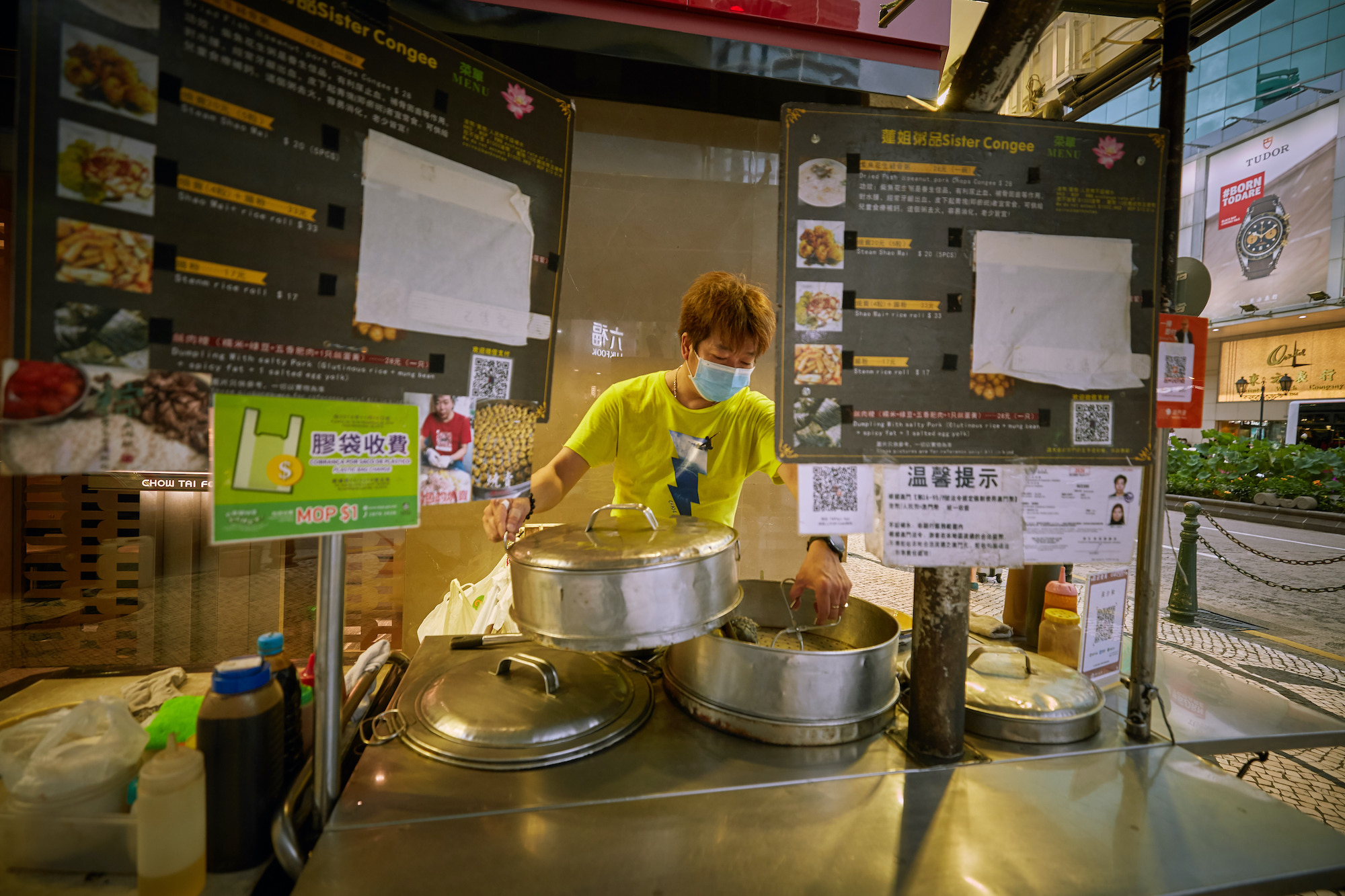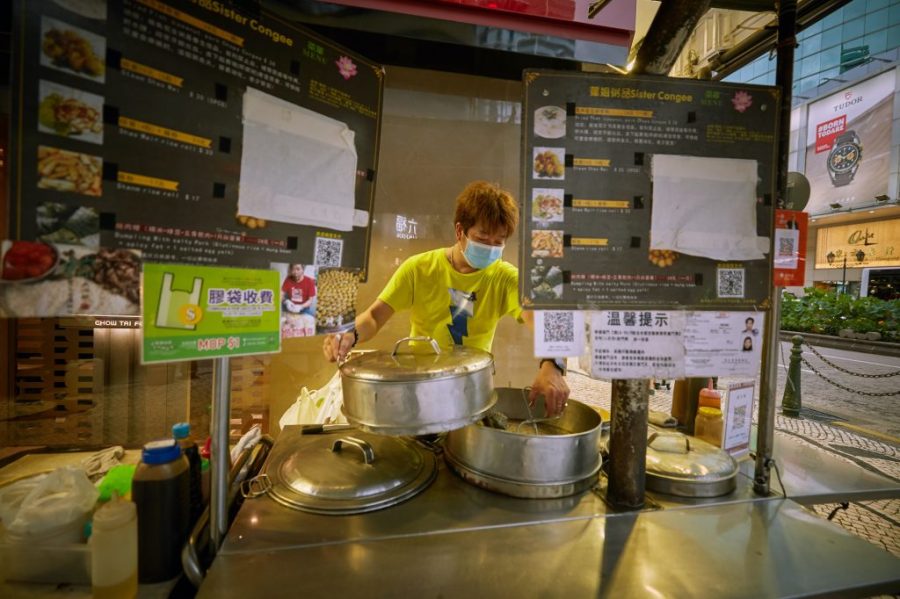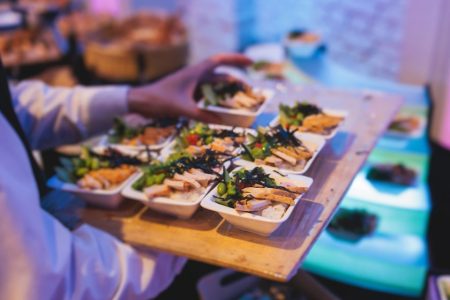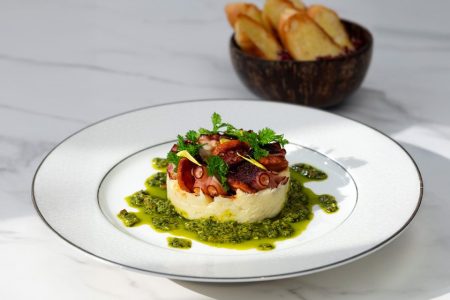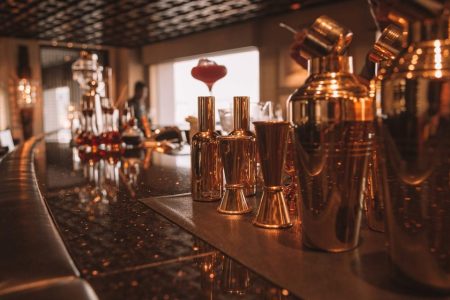Once upon a time, food carts lined Macao’s streets and lanes, selling anything from ice cream and soup to Chinese tea eggs, dragon’s beard candies and maltose crackers. There was seemingly at least one trolley on every busy thoroughfare, making Macao look like a huge – and hugely tempting – food court.
Records are scarce when it comes to exactly how many, but we do know that in the 1980s, the numbers of street hawkers had increased into the thousands, with food vendors included. But all this is just a distant memory.
So what happened? In 1987, the government established an administrative department dedicated to the affairs of the hawker community and it passed new regulations on hawker licences which included a key change from the old days: the mobile vendors had to keep their carts in fixed locations and keep opening hours to set schedules.
Although this move drove many mobile vendors out of business or forced them to buy up stalls and shops, it didn’t wipe out the industry entirely. According to the Municipal Affairs Bureau, there were still 892 hawkers running trolleys or small stalls in the city as of January 2021, including those that operate in hawker buildings and cooked food centres.
But these survivors have kept the traditions going and they’ve been feeding their communities, as well as visitors to the city, for many years now.
“Good street food must first be ‘down to earth’ because street food should represent the intimacy between food and people,” says Memo Foodie, a popular Macao food Instagrammer and local gastronome who doesn’t reveal his real name. “This brings out the uniqueness of simple and delicious street food culture.”
We caught up with four street food vendors in Macao – each putting their own spin on local tradition:
Chak In Kei
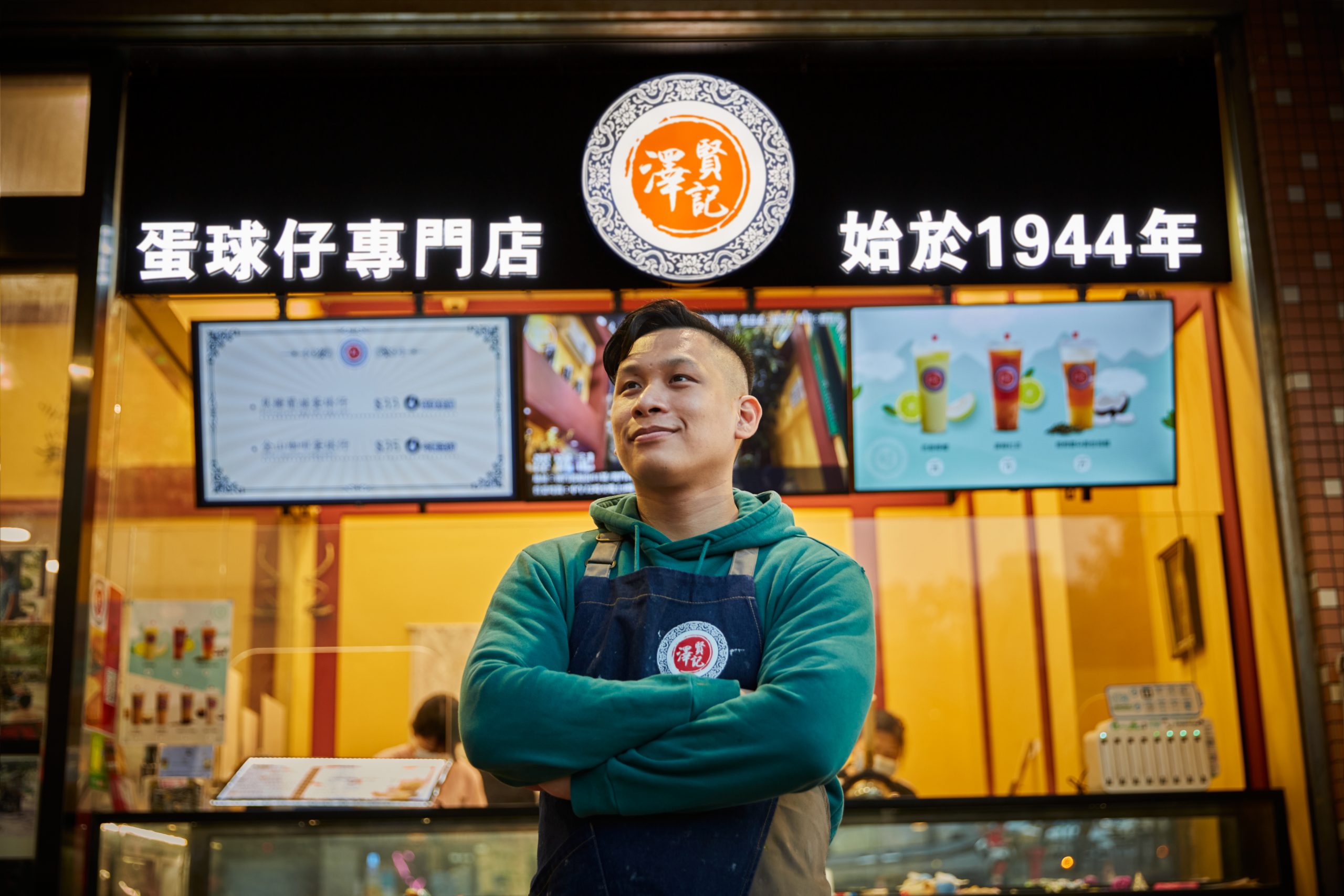
You can find Chak In Kei (澤賢記) trolley on the Broadway Food Street next to the Galaxy Macau resort. This business is actually 75 years old and once stood in the Praça de Luís de Camões, a square just down the road from the Ruins of St Paul’s.
Cheong Chak In, who is now 98 years old, originally opened the stall, which is now run by his grandson, Cheong Ka Hong. When Cheong senior moved to Macao from Foshan, in Guangdong province, around 1930, he started selling egg balls – like Hong Kong’s egg waffles but rounder, bigger and chewier – so he could feed his family of six.
Though his stall did a roaring trade, Cheong’s son didn’t take over the business (he became a firefighter instead) and so he closed Chak In Kei and retired in 1986. But in 2018, his grandson, Cheong Ka Hong, learned how to create the family recipes and started up the stall again on Broadway Food Street.
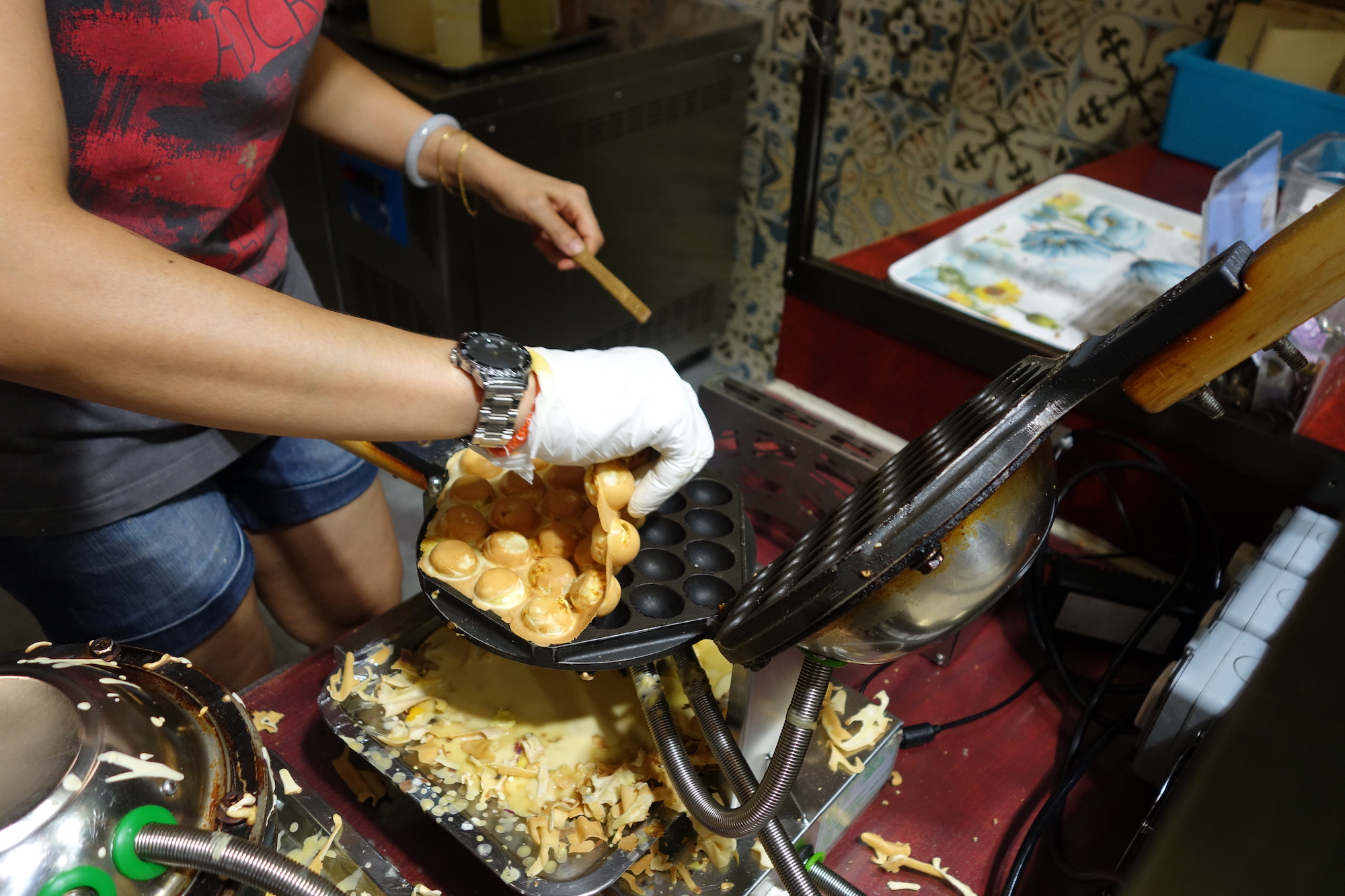
Cheong Ka Hong loves to experiment with flavours at his trolley. For example, he’s combined his grandfather’s egg balls with Portuguese egg tarts – a popular snack.
It takes the 29-year-old and his team seven hours to prepare the mix; however, Cheong can sell more than 600 pieces every day. The business has done so well that Cheong has since opened five stores across town, each selling egg balls that come in an assortment of flavours, including salted egg, purple sweet potato, fruit oolong tea, wild cheese and fondant chocolate.
Cheong Ka Hong is optimistic about Chak In Kei’s future, but when asked if he expects the fourth generation of his family to continue the business, he says it “depends on their will.”
“They can add their own new ideas,” he says. “In this way, our egg balls will accumulate the wisdom of generations and become the favourite food of different generations in Macao.”
Sister Congee
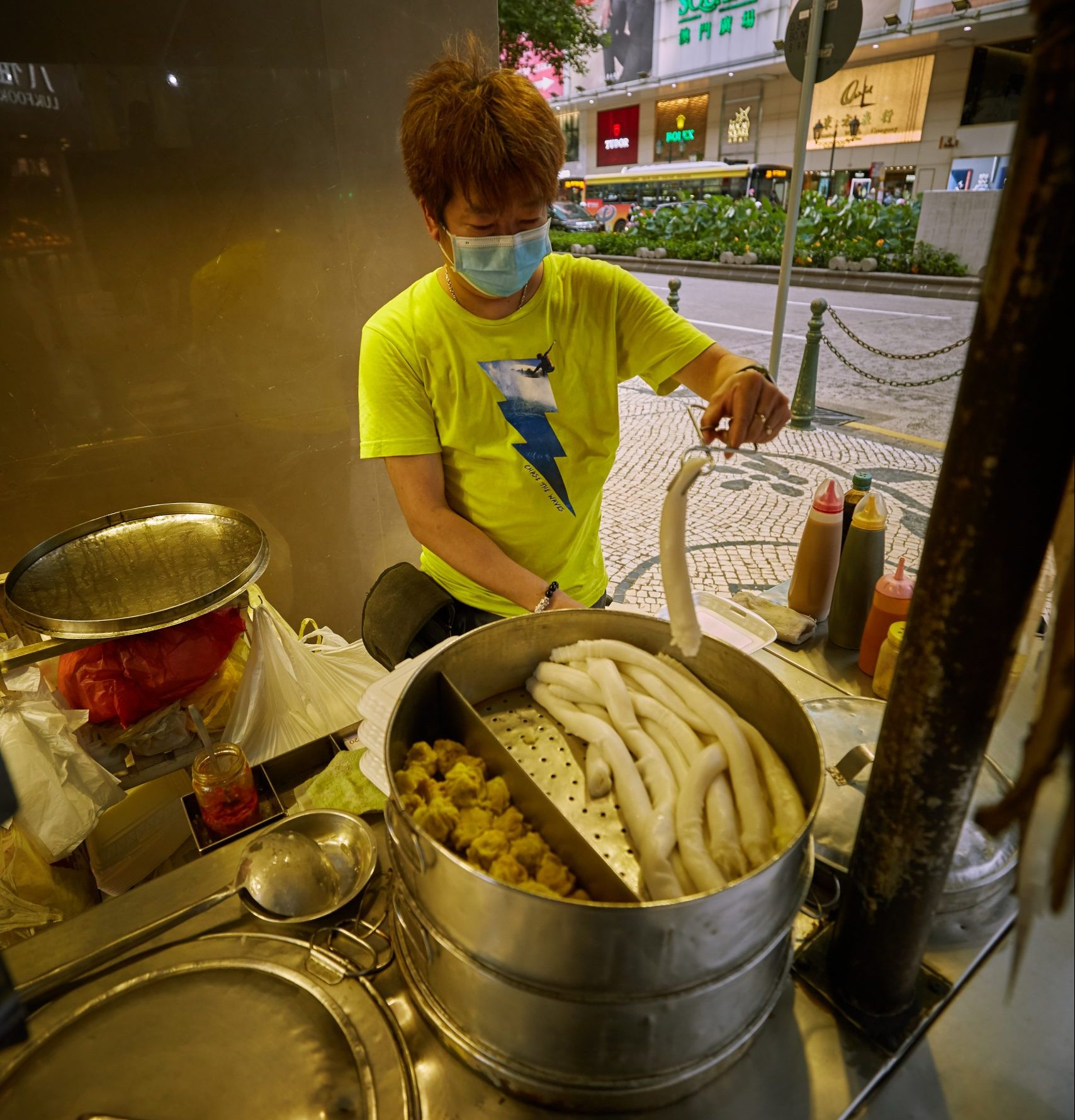
Located opposite Macau Square in the city’s CBD district, the Sister Congee (蓮姐粥品) trolley lights up between 6 pm and 1 am on certain days of the week, though the schedule varies.
Ng On On established the trolley – which has sat in the same spot ever since he received the cart’s licence – roughly 40 years ago to provide for the family. When Ng senior passed away, his wife took over, followed by their son Ng Sio Vo.
They are best known for their special congee, made with dried stockfish, pork bone and peanuts. But customers also love their steamed cheung fun rice rolls, shumai and rice dumplings, says Ng. In normal times, Sister Congee sells about 100 bowls of congee and 120 plates of cheung fun on a good night.
But since Covid-19 travel limitations and safety precautions hit the city, Ng says there’s been an 80 per cent drop in business so he’s trying to come up with ways of saving the enterprise. He considered offering food delivery but decided against it due to concerns about wait times and quality control. “We don’t have enough people to do food delivery,” he says. “There’s only me and my wife.”
Ng says that the business used to have more customers when he could stay open from 9 pm until dawn the next day. But due to new regulations, Ng had to close at 1 am, which cost him some late-night business.
He and his wife have met all sorts of people over the years while manning Sister Congee. “There was a time when a drunk guy just paid MOP 1,000 for a bowl of congee,” he recalls. “He told us that no change was needed. There have also been people who have refused to pay or have said they’d pay next time…”
Yau Kei Dragon’s Beard Candy
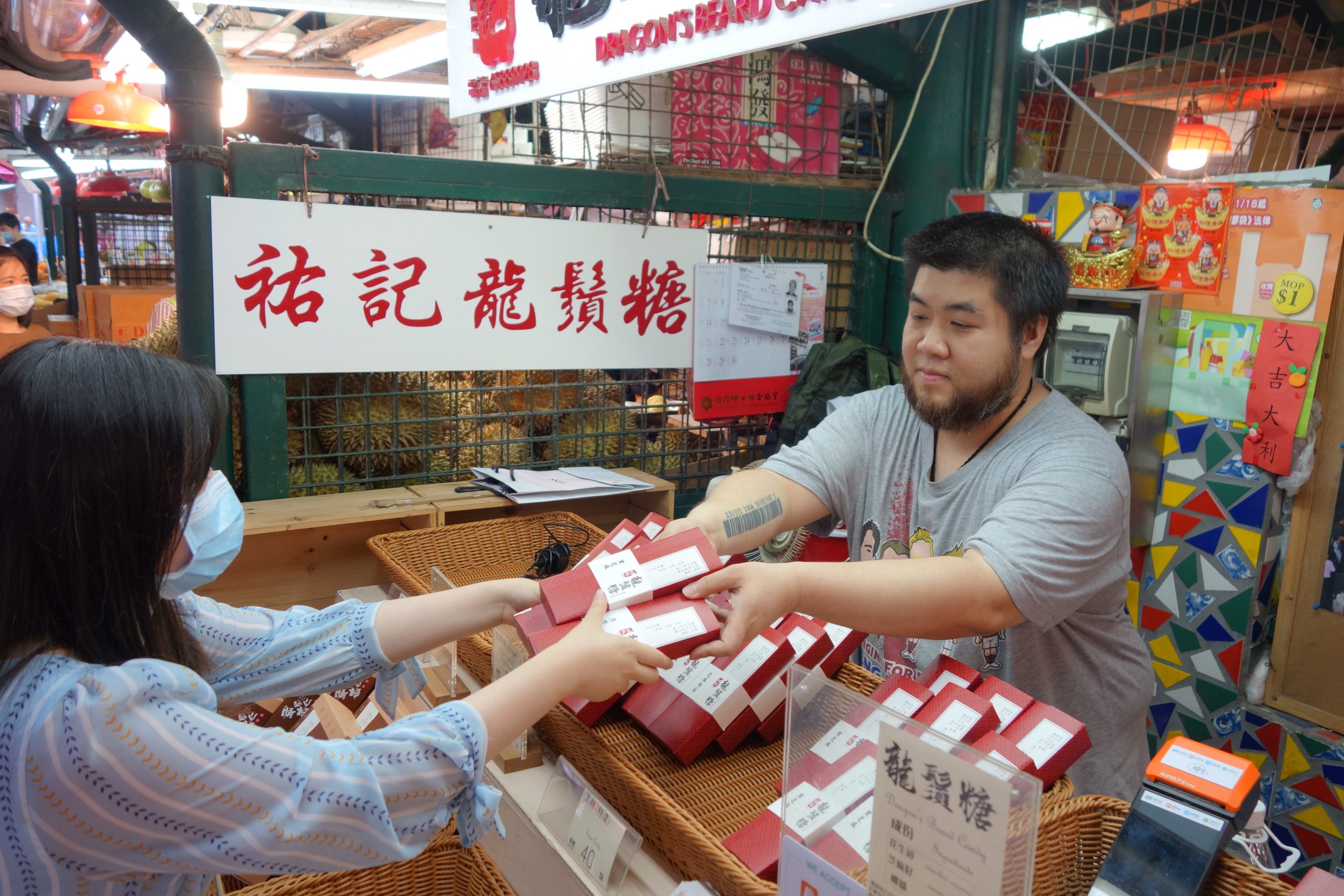
Kenny Yuen runs the Yau Kei Dragon’s Beard Candy trolley in the Rua de Fernão Mendes Pinto hawker zone in Taipa. This cart was founded by Yuen’s father, Yuen Tin Yau, more than 40 years ago but now his 38-year-old son and his partner, PR manager Wong Ka Kei, manage the business.
They’ve done so well selling the peanut-filled fluffy white candy – which has just been added to the government’s Intangible Heritage list – that they opened a shop in St Lazarus district two years ago, in addition to the trolley.
Their dragon’s beard candy has proved popular among older and younger generations alike, thanks to a tried-and-tested recipe that calls for malt sugar, flour, peanuts and a sesame filling. While tweaked slightly, the black sesame flavour of Yau Kei’s dragon’s beard candy remains very similar to traditional recipes.
Wong says the enterprise sells around 2,000 boxes every month and adds that they are innovating new flavours, such as ice cream and durian, to “bring creativity and add new elements to this tradition.”
He also sees the potential in small businesses like his, because he believes Macao’s tourism industry will pick up post-Covid-19 and once again brings a huge market. Keen to share this Macao food tradition with more visitors from around the world, he and Yuen are looking for young people in Macao who are interested in learning the trade.
Chi Tou Congee
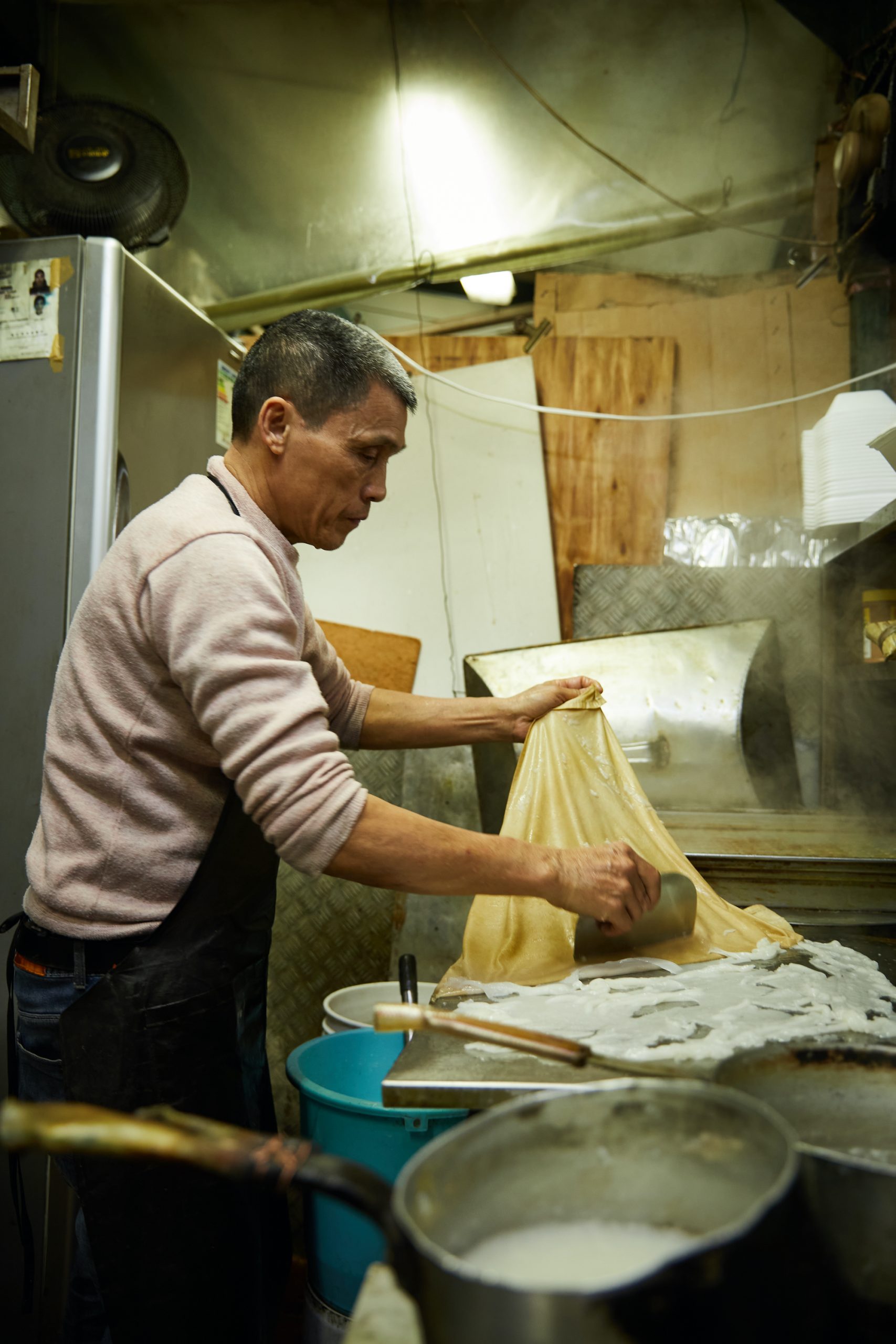
Located near the Horta da Mitra Municipal Market, Chi Tou Congee (志圖粥品) has been serving up fresh, steaming hot congee and homemade steamed rice rolls every day for almost 40 years. Owner Wong Wan Tou gets up at 4 o’clock to cook the congee and cut all the ingredients before opening the shop in the early morning.
The small but well-organised business is usually ready just in time for the morning rush, staying busy until at least noon. Almost every family knows how to cook congee, but Chi Tou’s congee is particularly fragrant and creamy.
“We soak the rice, put in boiling water, then add ginkgo and conpoy into the congee,” says Wong. “That’s my secret to making it fragrant and smooth – I cook my congee very carefully.”
Apart from congee, Wong says his homemade steamed rice rolls draw a following. He makes them using his own batter: “One of the secret ingredients is water chestnut powder.”
The 62-year-old moved from Shunde, in Guangdong province, to Macao as a young man and studied as a cooking apprentice before starting his own trolley business. The outfit grew over time and, at its peak, employed seven employees and offered a large menu including congee, rice rolls, Cantonese sponge cake, radish cakes, taro cakes and fried noodles.
However, following the government’s reformation of the area in 2012, the trolley shrank back down and now focuses on its two specialities – congee and steamed rice rolls – in many flavours. Although the business is very busy, Wong says it’s not too difficult since his wife helps him every day.
Before the Covid-19 outbreak, groups of travellers from Hong Kong, Malaysia, the US and Singapore would make special trips to the trolley. Although there have been fewer customers during the pandemic, the business remains popular among local diners.
“We sell more congee on cold days, just like today!” When asked if he has any new plans or new dishes in 2021, Wong says he doesn’t plan to add any new dishes for the time being. “We are already in our 60s, but we want to keep working at the trolley as long as we can.”
